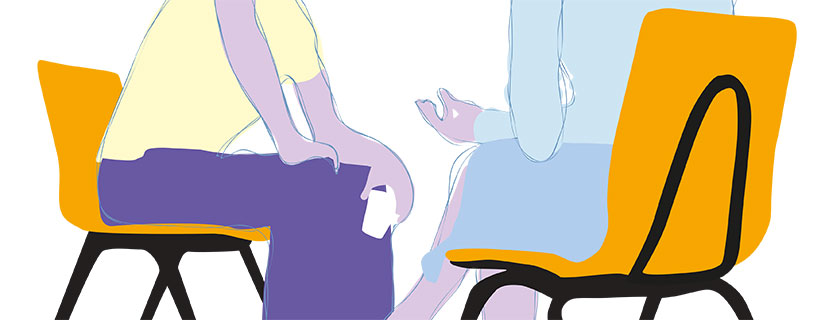Systematise prevention
Start by assessing the scope of shoplifting. Go through the shoplifting incidents you’ve experienced: What happened? Which products were stolen? Who was the thief/thieves, etc.?
Once you’ve gained an overview of this, it will be easier to assess the scope of the problem and decide how to prevent theft. Based on this assessment, you can launch initiatives to help prevent shoplifting. This could be initiatives focusing on how you handle products, the layout of the shop, technological equipment and staff alertness. Read more in the How to prevent shoplifting section above.
Subsequently, it’s important to draw up a plan for how you want to deal shoplifting and instruct the staff, so that everyone knows what to do.
Instructing employees
Employee efforts are crucial to ensure proper prevention. Therefore, employees need to know what to do in everyday situations. This is where instruction important. Talk about what you understand as suspicious behaviour, and what the staff should be aware of in this respect.
- Talk about what you understand as suspicious behaviour at the shop, so that everyone can become better at spotting the signs. You all probably have experiences to share.
- If you’ve caught a shoplifting incident on the shop’s video surveillance, you can watch the recording together and discuss what you can learn from the incident.
How do you deal with thieves?
Furthermore, everyone in the shop should know how to deal with a suspected shoplifter. How do you approach a suspicious customer? Agree on when and how you can refuse a customer admission, for example when a person is known for previous theft.
Detaining a shoplifter requires thorough instruction. Moreover, staff must feel confident about detaining shoplifters and exercising the necessary authority. Remember that it’s OK to not get involved if you don’t feel up to the task, for either physical or psychological reasons.
No matter what, there is no reason to expose yourself to strong verbal or physical abuse or the risk of such abuse. In this case, it’s better to let the thief get away or call the police.
Clear guidelines
Clear guidelines for dealing with shoplifting help create a sense of security for the staff. Such guidelines should describe:
- Where and when you can detain a suspected shoplifter, and how.
- How and when to call the police.
- What to do if the shoplifter puts up resistance or refuses to come with you.
- How to interrogate a shoplifter.
- What to do if you’re wrong and the person is not a shoplifter.
What to do after the shoplifting incident: reporting etc.
The sector guidelines on shoplifting prepared by BFA Handel include a checklist of the questions you should remember to answer in your guidelines. See link above.
Adjust the guidelines to your shop
Situations with shoplifting can differ considerably from shop to shop and at the shop itself. As a manager, you should consider how you want to the guidelines for your shop to be worded.
There are many different types of shoplifters, including children/adolescents/the elderly/women/men, and they can work alone or in groups. They also act very differently when they get caught. Some become embarrassed and ashamed, others become aggressive and resist verbally or physically, and yet others may break down in tears.
Staff also differ, for example adolescents/the elderly, woman/men, years of retail experience. There is also a difference in whether you’re the only employee at the shop, or whether several employees are present.
Moreover, it’s about being able to act and be authoritative and assertive. But it’s also about being able to show sympathy, for example when the thief is a child, an old person or a sick person.
Reaching a common understanding
Guidelines should be prepared in collaboration between management, employees and the health and safety group if you have one.
You should ensure that your guidelines on shoplifting are discussed regularly, for example at a staff meeting, and make sure that new employees become familiar with them. This will secure a common understanding and thereby greater certainty that the guidelines will be followed.
Tools and links
Sector guidelines on shoplifting: BFA Handel has prepared sector guidelines on shoplifting: Shoplifting – sector guidelines for employers, management and the Health and Safety Organisation. This describes how you can prevent and deal with theft at the shop, and how you can prepare using fixed procedures and guidelines.

